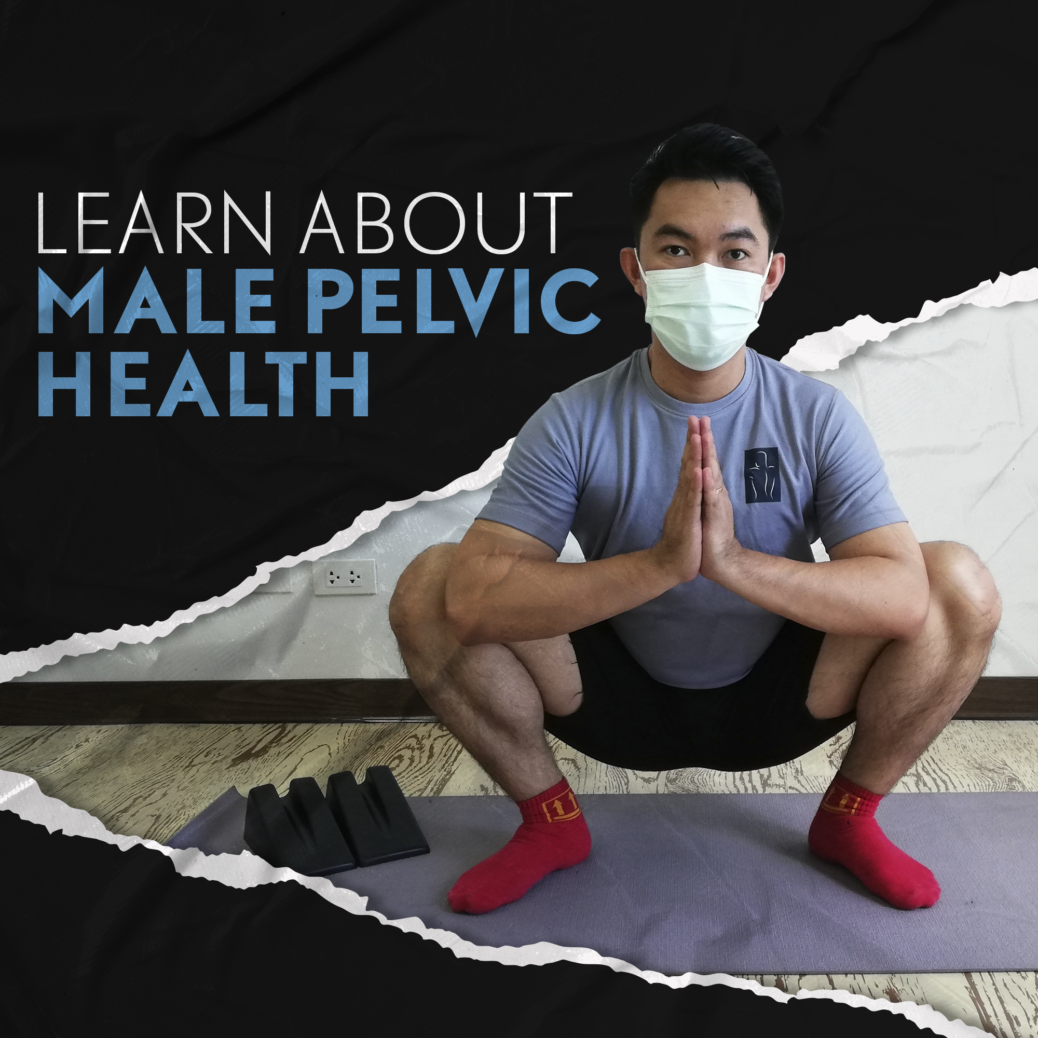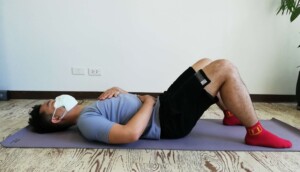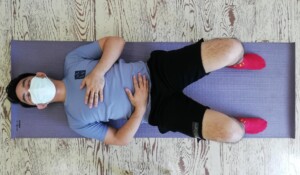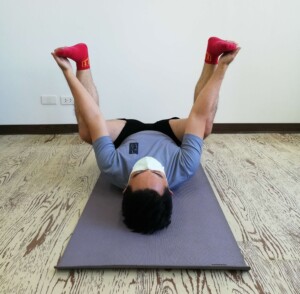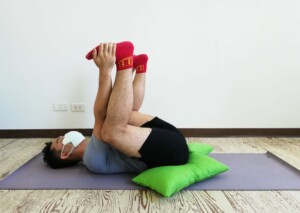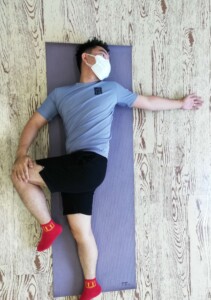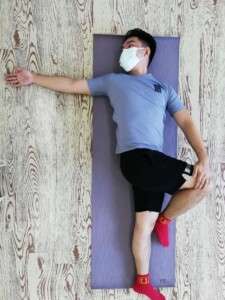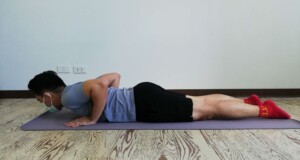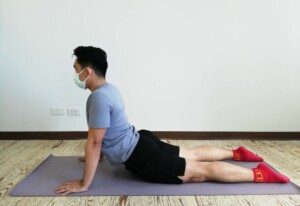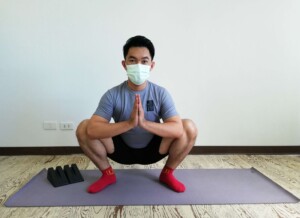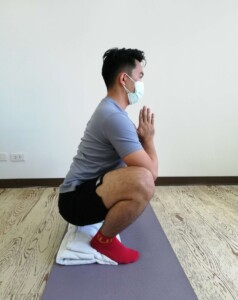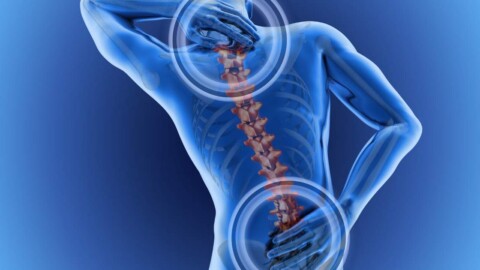WHAT IS THE PELVIC FLOOR?
The pelvic floor has a group of muscles that runs from the pubic bone in the front of your pelvis to the tailbone in the back at the base of your spine. It acts like a hammock and supports your internal organs, particularly your genitals and bowels. It can sometimes become too tight or hypertonic for a number of reasons, and this can cause pain, discomfort and problems in the genitals and anal region.
Hypertonic pelvic floor means your muscles are too tense, and many men find that this leads to difficulty in urinating, feeling of constipation, incomplete and painful bowel movement. Some men will have painful and/or weak erections, pain during and after orgasm, or sometimes will have heaviness is the scrotal area.
These problems are debilitating and can affect your everyday activities like having sex, going to the gym, or even going to the toilet. In some cases, stretching certain muscles can relieve some of the painful symptoms as it releases the tight muscles surrounding the pelvis. Read on to know more about the stretches you can do to help relax your hypertonic pelvic floor.
BEFORE WE BEGIN
Find a quiet and private space to do these exercises. Wear loose comfortable clothing, and make sure it has been at least 30 minutes since your last meal.
DEEP BREATHING
Also known as diaphragmatic breathing, this breathing technique lets us maximize your lung capacity and allows better oxygen-carbon dioxide exchange. It helps lower your blood pressure and creates a more relaxed state of being.
- Lie down as shown and close your eyes. Place your dominant hand over your belly and the other over your chest.
- Take a deep breath, expanding your belly as you do. The inhalation should be slow and steady, taking 5 seconds to complete. Hold the breath for 3 seconds and exhale through pursed lips for 5 seconds. Hold breath again for 3 seconds, and then proceed to do the cycle again.
- You should feel your dominant hand rise with your expanding belly, and little to no movement over your chest.
- Start with 5 cycles.
HAPPY BABY
This pose helps release tension in your spine, stretches your buttocks and leg muscles, and helps open up your hips.
- Lie back on your yoga mat or firm mattress, lift your legs up and grab hold of your feet or ankles.
- You may be unstable in the first few seconds of the pose. Steady yourself by propping pillows by your buttocks.
- While in the happy baby pose, do 5 cycles of your deep breathing.
SUPINE SPINAL TWIST
This pose stretches your whole spine and buttocks. It also stimulates and stretches your abdominal muscles.
- Lie back on your yoga mat or firm mattress. With your right hand, pull the left knee across the body and twist your spine, while the left arm stretches out the other way.
- Turn your head and look at your left hand. Do one cycle of your deep breathing technique, and slowly return to lying flat on your back.
- With your left hand this time, pull your right knee across your body and stretch the right arm out the other way.
- Turn your head towards your right hand and do one cycle of your deep breathing.
- Do this sequence 3 times.
UPWARD DOG
This pose stretches the abdominals and stimulates the lower back muscles and your buttocks. It helps realign the spine and release the tension in your front side.
- Lie on your belly and place your hands at the level of your nipples.
- Push up as you inhale, but keep your hips and pelvis in contact with the mat. Feel your abdominals stretch as you slowly inhale.
- Slowly lower yourself back to the starting position as you exhale.
- Do this sequence 5 times using the deep breathing technique
SQUATTING GROIN STRETCH
This pose opens up your hip and stretches your groin muscle. It is also an efficient way to stimulate and engage your pelvic floors actively.
- Stand up with your feet hip-width apart.
- Squat down and place both arms on the inside of your thighs. Do 5 cycles of deep breathing.
- If tolerated, try pushing your knees outwards with your elbows as you exhale.
- If squatting is difficult to do because of tight calves, try elevating your heel with books or towels.
Article written by: Ivan Llanto
BS Physical Therapy (PH) Registered Physiotherapist
Ivan received his certificates of completion on Male Sex-Health and Prostate Health Rehab Practitioner (non-invasive) from the International Institute of Pelvic Floor Research, Rehab and Education (WOW IIPRE), India in 2020 and is spearheading the male pelvic floor rehab program in ProHealth Sports and Spinal – Manila. Ivan is currently the only male practitioner for male pelvic health in the Philippines.
A hypertonic pelvic floor and pelvic pain is a complex issue and may be caused by several factors. Book a consultation and talk to our pelvic floor physiotherapist to know more.

